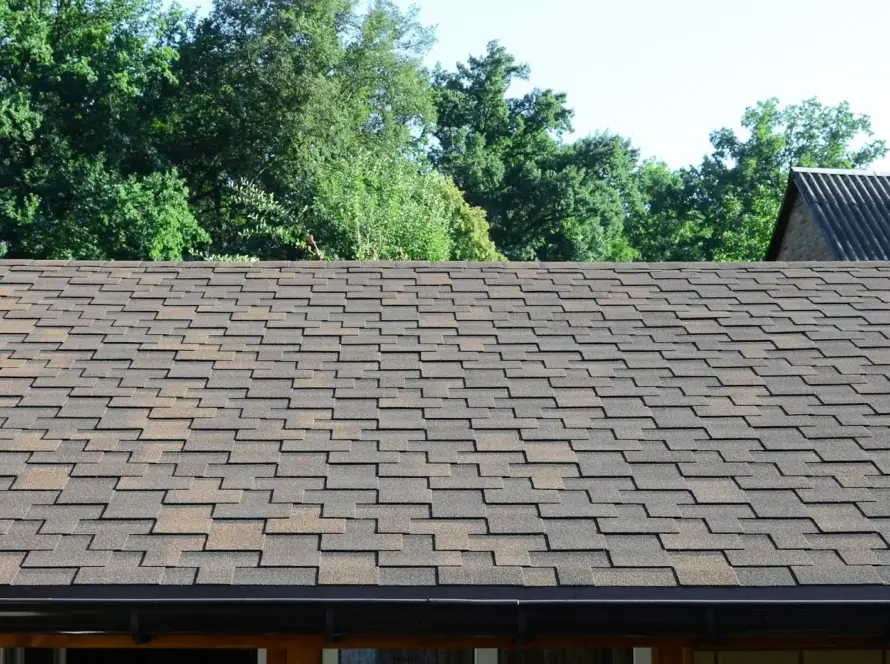Sturdy roofs shield a home from rain, wind, and extreme temperatures. Correct installation prevents leaks, structural damage, and costly future repairs. Every layer, from the underlayment to the shingles, plays a role in its durability. Careful planning and precision ensure the roof stands strong for years. Following a structured approach simplifies the process and leads to a professional-quality result. The right materials and techniques can make a significant difference in longevity.
A Step-By-Step Guide to Installing a Roof
A well-built roof does more than cover a home—it protects everything inside from harsh weather and environmental damage. Even the best materials can fail without proper installation, leading to costly repairs and potential safety hazards. Taking the appropriate steps from the start helps create a roof that withstands years of wear and exposure.
1. Preparing for Installing a Roof
Planning before installation prevents costly mistakes and delays. Without proper preparation, the roof may not last as long as expected. Taking the time to get everything in order leads to a smoother process. A well-prepared worksite reduces risks and improves efficiency.
Gather the Right Materials and Tools
High-quality materials and the right tools make installation easier. Roofing materials include shingles, underlayment, nails, and flashing. Essential tools include a hammer, roofing shovel, nail gun, and ladder. Choosing shingles depends on climate, budget, and durability. Safety gear, such as gloves and harnesses, reduces the risk of injury. Investing in reliable materials prevents frequent replacements and repairs.
Inspect the Roof Deck and Structure
A strong deck supports the new roof and prevents sagging. Checking for damage helps avoid hidden issues before installation. Rot, mold, and weak boards must be replaced to ensure stability. Reinforcing the structure increases longevity and prevents leaks. Proper inspection saves time and money in the long run. A weak deck can cause shingles to detach prematurely, leading to leaks.
Check the Weather Before Installation
Weather conditions affect roofing materials and installation quality. Working in extreme heat can soften asphalt shingles, making them harder to handle. Cold temperatures may cause shingles to become brittle and break. Installing a roof on a dry, mild day helps materials settle properly. Checking the forecast prevents unexpected delays. Windy conditions can also make handling materials difficult and unsafe.
2. Removing the Old Roof for a Fresh Start
A clean surface is necessary for a solid installation. Removing old shingles, underlayment, and nails ensures better adhesion. Skipping this step leads to uneven placement and long-term problems. Taking time to clear the surface properly makes the next steps easier. A thorough removal process prevents underlying issues from affecting the new roof.
Strip Off Old Shingles and Underlayment
Starting at the roof’s highest point allows for easier removal. A roofing shovel or pry bar helps lift shingles efficiently. Nails and old underlayment must be removed to expose the deck. Proper disposal of materials prevents safety hazards on-site. Cleaning the surface ensures a strong foundation for the new roof. Removing old materials also allows for a clear assessment of any underlying damage.
Examine and Repair the Roof Deck
A weak deck cannot adequately support a new roof. Checking for soft spots, water damage, and missing nails is necessary. Damaged plywood or boards should be replaced to prevent future issues. Flashing around vents and chimneys should be checked and reinforced. A solid deck extends the roof’s lifespan. If structural damage is found, reinforcing the area with new supports may be required.
3. Installing a Roof With Proper Underlayment
Underlayment acts as a protective barrier between shingles and the roof deck. It prevents moisture damage, enhances insulation, and extends the roof’s lifespan. Correct installation ensures better weather resistance. Without this layer, water leaks can cause severe structural damage. The proper underlayment provides an extra layer of defense against harsh weather conditions.
Choose the Right Underlayment
Different underlayment options offer unique benefits. Felt underlayment is affordable but absorbs moisture over time. Synthetic underlayment is lightweight, durable, and water-resistant—climate and budget influence which type works best. A high-quality underlayment provides extra protection from harsh weather. Choosing the right material ensures a strong and long-lasting roofing system.

Lay the Underlayment Correctly
Starting from the bottom ensures complete coverage. Overlapping each layer prevents water from seeping through gaps. Fastening it securely with nails or staples keeps it in place during heavy winds. Wrinkles or bubbles can cause improper shingle placement and should be smoothed out. An adequately installed underlayment helps keep the roof waterproof. The installation should be done carefully to avoid tears or gaps in coverage.
4. Installing Roofing Shingles With Precision
Shingles protect the roof from rain, wind, and sun exposure. Correct placement and fastening prevent leaks and premature wear. Proper alignment and fastening improve the roof’s overall durability. Taking time to install them carefully reduces the risk of future repairs. A strong shingle foundation ensures better resistance against extreme weather.
Select the Right Type of Shingles
Different shingles provide varying levels of durability and aesthetics. Asphalt shingles are standard due to their affordability and ease of installation. Metal shingles last longer and resist fire and strong winds. Tile shingles add a stylish appearance but require a substantial roof structure. Choosing the right type depends on climate, budget, and personal preference. The proper selection ensures better performance and longevity.
Align and Secure the Shingles
Starting at the lower edge of the roof creates a solid foundation. Each row should overlap the one below to prevent water infiltration. Nails should be appropriately placed to keep shingles from lifting during storms. Sealant strips enhance wind resistance and hold shingles in place. Proper alignment gives the roof a polished, professional look. Ensuring correct spacing between shingles improves ventilation and durability.
5. Sealing and Flashing for Maximum Protection
Flashing and sealant prevent leaks in vulnerable areas. Without proper sealing, water can seep into cracks and weaken the structure. Using the right materials extends the life of the roof. Skipping this step may lead to costly water damage repairs. A properly sealed roof enhances overall durability and prevents common roofing problems.
Install Flashing Around Chimneys and Vents
Flashing directs water away from openings like chimneys and vents. Metal flashing is the most durable option for long-term protection. Proper installation involves overlapping edges and securing them with nails. Sealants should be applied to keep water from sneaking through gaps. Well-installed flashing prevents moisture-related issues inside the home. Regularly checking the flashing helps identify signs of wear and tear before problems arise.
Apply Sealant to Prevent Leaks
Sealant strengthens weak spots and prevents water penetration. It should be applied around flashing, nails, and roof edges. Using a caulking gun helps with accurate application. Over time, the sealant may need reapplication as it wears down. A properly sealed roof stays watertight for years. Selecting a high-quality sealant improves overall effectiveness and longevity.
Inspecting and Finalizing the Roof Installation
A final inspection ensures a long-lasting and durable roof. Checking for loose shingles, exposed nails, and gaps prevents issues later. Cleaning up the work area eliminates safety hazards. Leaving the roof in top condition guarantees better performance. A thorough review ensures no missed steps in the installation process.
Check for Proper Alignment and Fastening
Loose shingles can lead to wind damage and leaks. Nails should be flush with the surface to prevent shifting. Flashing and sealant should be checked for proper placement. Any uneven areas should be adjusted before finishing. A thorough inspection prevents unnecessary repairs. Addressing small misalignments now avoids more significant issues in the future.
Clean Up the Worksite and Roofing Debris
Old shingles, nails, and packaging must be disposed of properly. A magnetic sweeper helps collect stray nails from the ground. Leftover materials should be stored or discarded safely. A clean worksite ensures that no hazards are left behind. Proper cleanup ensures safety and keeps the home exterior tidy.

Safety Tips for DIY Roof Installation
Roof installation comes with significant risks, especially for those without professional help. Falls, tool-related injuries, and exposure to extreme weather conditions can turn a simple roofing project into a dangerous situation. Prioritizing safety ensures not only a successful installation but also personal protection. Following essential precautions helps minimize accidents and allows for a smoother, stress-free roofing process.
Wear a Harness and Use Fall Protection Gear
Working at heights increases the risk of falls, making proper safety gear essential. A full-body harness with a secure anchor point helps prevent serious injuries. Roofing ropes and guardrails provide additional support, especially on steep or slippery surfaces. Always check that the harness fits snugly and is damage-free before use. A well-secured safety system can differentiate between a minor slip and a life-threatening accident.
Use a Stable Ladder With Proper Support
A sturdy ladder is crucial for safely accessing the roof. It should be positioned on even ground and secured to prevent movement. Extending the ladder at least three feet above the roofline provides a steady handhold when climbing up and down. Having a helper stabilize the ladder reduces the risk of tipping. Never exceed the weight limit or lean too far while working at the top.
Avoid Roofing Work in Wet or Windy Conditions
Unpredictable weather increases the danger of working on a roof. Wet shingles and underlayment become slippery, making it easier to lose balance. Strong winds can shift materials or cause instability while handling large roofing sheets. Extremely hot conditions can also soften asphalt shingles, making installing them more challenging. Checking the weather forecast and choosing a mild, dry day prevents unnecessary risks.
Wear Protective Gear for Maximum Safety
Proper protective clothing reduces the chance of injuries while working. Non-slip boots with substantial grip help maintain stability on sloped surfaces. Heavy-duty gloves protect hands from cuts, sharp nails, and rough materials. Safety glasses prevent dust, debris, and flying particles from causing eye injuries. A hard hat is also recommended, especially when working with a team or handling heavy tools.
Be Aware of Electrical Hazards
Roofs often have power lines running nearby, creating a risk of electrocution. Always check for overhead wires before starting work, especially when handling metal tools. Keep ladders and roofing materials at least ten feet away from power lines. If any electrical components are exposed, contact a professional before proceeding. Taking these precautions prevents dangerous electrical accidents that could be life-threatening.
Properly Installing a Roof That Lasts for Years
A well-installed roof provides reliable protection and energy efficiency. Regular maintenance helps detect minor issues before they become significant problems. Annual inspections ensure durability through different weather conditions. Proper installation and upkeep extend the roof’s lifespan for decades. A strong and well-maintained roof adds value and security to any home. Investing in quality materials and following the proper techniques prevents costly repairs in the future. Taking the time to install and properly care for a roof ensures it remains a durable and dependable shield against the elements.
Strong roofs start with the proper knowledge! Explore the Pinnacle Roofing LLC blog for expert advice and step-by-step installation tips.


